by Dorothy Day
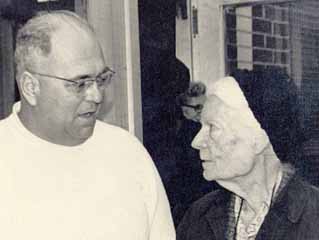
Dorothy & Dolci, 1968; photographer unknown; courtesy Swarthmore College Peace Center.
While I was in Rome I assisted at a dialogue Mass at the Jesuit headquarters on the Via Santo Spiritu in Rome just down the street from the Hospital of the Holy Spirit, where one can still see the turnstile into which destitute mothers used to place their newborn infants to be succored by the nuns. After the kiss of peace and communion we went out into the cobbled streets to find a place to have dinner – Eileen Egan, Dorothy Coddington, Gary McEoin, Tom Cornell, Fabrizio Fabbrini and I. The only trouble with such an interesting group was that there were too many things to talk about, too many avenues to be explored.
Fabbrini, a professor at the university in Rome, had lost his position and had been imprisoned for six months in a damp cold cell beneath the level of the street. He was in the same cell with nine others, not conscientious objectors but sentenced on various charges. There was neither work nor exercise nor recreation for him, and one wonders how he stood it.
Gary could have told me something about Vatican finances, since he has written a book on the subject, but Dorothy Coddington began talking about the work of Danilo Dolci, and her talk was so interesting that I resolved to visit Sicily before proceeding to London. Eileen was going on to Isreal and had already been to Trieste.
Read the rest of this article »
by Dorothy Day
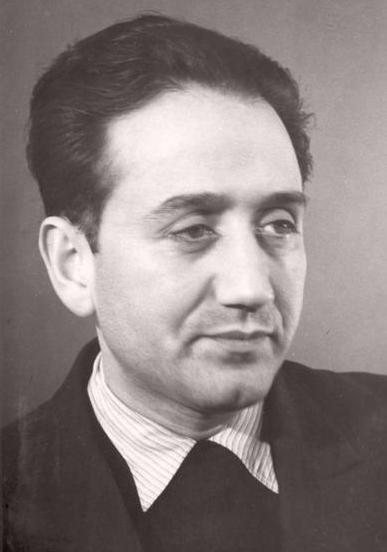
Ignazio Silone; photographer unknown.
In wrestling with the problem of how to present the teachings of nonviolence in an age of mass violence, it seems to me that the writings of Ignazio Silone are of immense importance. When I first read Bread and Wine in the forties, I was deeply impressed, not only with the story of the revolutionary returning secretly from his exile in Switzerland, but with the call to a personalist approach which must precede any communitarian effort.
I had heard from Father Jack English, a former CW editor, of Silone’s visit to the Trappist monastery of the Holy Spirit at Conyers, Georgia. Silone spent the day at the Abbey within the enclosure, and it was left to Father English to be guest master and converse with his wife, a beautiful Irish woman whom he met during his exile in Switzerland. They had come to Atlanta to discuss the problems of the South and had been brought to the monastery by the editor of the Atlanta Constitution because there was an international meeting of the Trappist order going on there.
On another occasion Silone and his wife had visited New York and New England and had called the office of The Catholic Worker, but I did not receive the message until they were well on their way back to Italy.
So I was delighted when I was invited to dine with them in Rome in late October. We went to a restaurant on the Piazza Carlo Goldoni that was usually very quiet, they said. There was a large area outside for dining; but it was a cool night, so we went into one of the small rooms, which, unfortunately, was very crowded and noisy that night. There were two tables full of noisy young Americans, one large party of uproarious Italians and still another family with small babies. So I did not get as complete an interview as I would have liked.
Read the rest of this article »
by Joseph Geraci
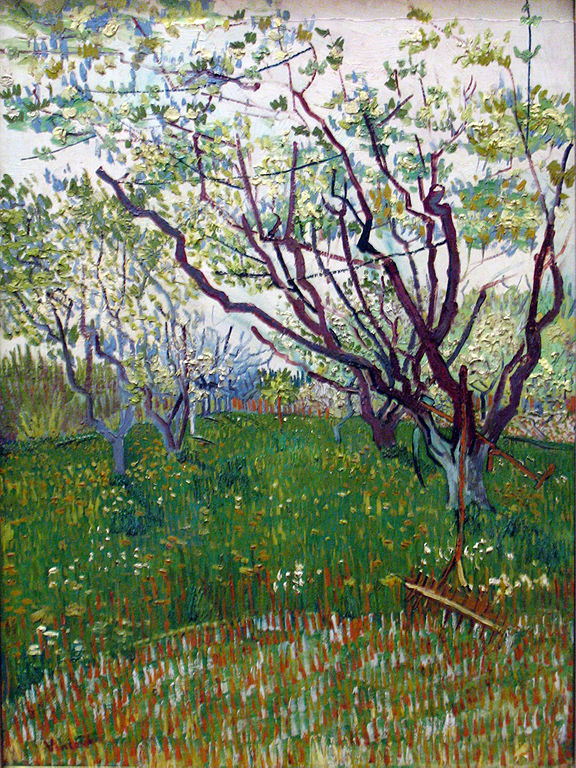
Vincent van Gogh, “The Flowering Orchard”; 1888; Metropolitan Museum, New York; courtesy of commons.wikimedia.org
There is a sense of satisfaction in planting a tree. Usually it will be around far longer than the planter. The oak that Shelley planted as a child at his family home became a memorial. People still collect leaves from trees near Tolstoy’s grave, trees that shaded him on his walks through Yasnaya Polyana. There are good reasons for planting trees. Even a Tolstoy had to be reminded of life’s brevity. Planting a tree that will shelter our grandchildren, and theirs, can silence us before a vast and timeless nature, so still, so much more in touch with the timeless than busy people.
Read the rest of this article »
by Joseph Geraci
In March, 1969, Danilo Dolci was in New York for the publication of his book, The Man Who Plays Alone. Dorothy Day and I had the good fortune of meeting him for an hour and a half, in a quiet corner of the lobby of the famous Algonquin Hotel, along with ten or so others that included Dolci’s biographer, Jerre Mangione, his editor, the journalist and co-founder of Pax, Eileen Egan and various press people.
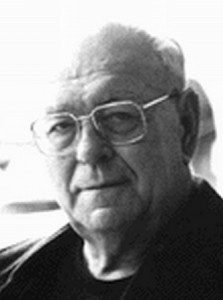
Danilo Dolci; c. 1970; public domain image; photographer unknown.
Dolci was actually born in Sezana, Yugoslavia, under Italian administration at the time of his birth. So, if you were to imagine a small Sicilian type, you would be surprised. He is over six feet tall and solidly built; his eyes dark blue, behind gold-rimmed glasses. He was wearing an inexpensive knit suit and tie, and spoke without gestures. His answers to our questions were short and precise, often only a yes or no; he always looked directly at the questioner, sometimes returned a question with a question, and sometimes made a joke. Dolci has also published a volume of poetry; he uses words carefully and precisely.
Read the rest of this article »
by Joseph Geraci
A Passion for Sicilians: The World Around Danilo Dolci by Jerre Mangione. New York: William Morrow, 1968.
Danilo Dolci has been dubbed the “Gandhi of Sicily.” Since the mid 1950s he has attracted attention as one of the world’s leading social reformers and nonviolent activists. His methods and thought should have attracted considerable attention in America, where the need for both grassroots planning (pianificazione) and local redevelopment is apparent, although he remains relatively unknown.
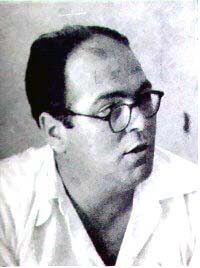
Danilo Dolci, c. 1955; photographer unknown; courtesy of wikimedia.org
Who is Dolci? This is the question Mangione’s comprehensive book sets out to answer. Thanks to a Fulbright grant, Mangione was able to spend several months of 1965 in Partinico, living near Dolci, and his Center of Studies. Part journal, part travel diary, part biography, it holds surprises. For example, Dolci is not Sicilian, and is barely Italian. “His Italian father had German and Italian parents; his Slav mother had parents who were German and Slav. This makes him half German, one quarter Slav and one quarter Italian.” Indeed, the town of Sezana, where he was born on June 29, 1924, is part of Yugoslavia; at the time “administered” by Italy. He began his intellectual life reading not the literature of rebellion and revolution but the classics, including the Koran, the Bhagavad Gita, Confucius and the Tao te Ching. He never read Thoreau and read Gandhi only after a French journalist referred to him as the “Gandhi of Sicily.” His first published book was a book of poetry. He studied architecture for four years in Milan but did not take a degree, stopping short a few weeks before graduation.
Read the rest of this article »
by Joseph Geraci

Original poster; artist unknown; courtesy of gandhijis-talisman.posterous.com
An extraordinary meeting took place October 7 [1969] in New York City, between Danilo Dolci and Cesar Chavez. That two of the most prominent leaders of the nonviolent land reform and resistance movement should meet might afford a glimpse of not only where the movement was, but in what direction it might conceivably go.
The meeting was attended by only a handful of people: Mrs. Coley, who was handling the arrangements for Dolci’s visit; Mark Silverman, head of the grape boycott in New York State; Anne Israel, a supporter of the boycott in whose apartment Chavez was staying; Dorothy Day; the photographer Bob Fitch, and myself. It was to begin at 6:30 P. M., but as Dolci was coming to the meeting directly from the airport, there was the inevitable delay. Chavez had arrived earlier with several co-workers, New York being the latest stop on their national tour. He walks with a slight limp, the result of a bone disease contracted after a fast. As we waited for Dolci, he told us that the recent grape boycott rally in Washington had been very successful. Spirits were high and there was a real determination to work hard and continue. In talking to some of the other boycotters there that evening one had the same impression. Mr. Ortiz, an organizer from Sacramento who will be helping Mark Silverman in New York, said that progress was slow but that everyone was very hopeful.
Read the rest of this article »
by Jim Forest

Thomas Merton; photograph by John Howard Griffin.
This is the text of the annual Oakham lecture, given in April 2012 at the meeting of the Thomas Merton Society of Great Britain and Ireland, Oakham School, England.
What initially put Merton on the world map was the publication in 1948 of his autobiography, The Seven Storey Mountain. It was an account of growing up on both sides of the Atlantic (part of his adolescence was spent here at Oakham), what drew him to become a Catholic as a young adult, and finally what led him, in 1941, to become a Trappist monk at a monastery in rural Kentucky, Our Lady of Gethsemani. He was only 33 years old when the book appeared. To his publisher’s amazement, it became an instant bestseller. For many people, it was truly a life-changing book. I have lost count of how many copies of the book have been printed in English and other languages in the past 64 years, but we’re talking about millions.
Merton was and remains a controversial figure. Though he was a member of a monastic order well known for silence and for its distance from worldly affairs, Merton was outspoken on various topics that many regard as very worldly affairs. Merton disagreed. He was a critic of a Christianity in which religious identity is submerged in national or racial identity and life tidily divided between religious and ordinary existence.
Read the rest of this article »
by Jim Forest

Dorothy Day in her room at the CW Farm. Tivoli, New York; c. 1970; photo by Bob Fitch
I first met Dorothy Day a few days before Christmas in 1960 while on leave from the U.S. Navy. After reading copies of The Catholic Worker that I had found in my parish library, and then reading Dorothy’s autobiography, The Long Loneliness, I decided to visit the community she had founded. I was based not so far away, in Washington, DC.
Arriving in Manhattan for that first visit, I made my way to Saint Joseph’s House — then in a loft on Spring Street, on the north edge of Little Italy in the Lower East Side of New York City. Discovering that it was moving day, I joined in helping carry boxes from an upstairs loft to a three-storey brick building at 175 Chrystie Street, a few blocks to the east. Jack Baker, one of the other people assisting with the move that day, invited me to stay in his apartment in the same neighborhood. A few days later I visited the community’s rural outpost on Staten Island, the Peter Maurin Farm. Crossing Upper New York Harbor by ferry, I made my way to an old farmhouse on a rural road just north of Pleasant Plains near the island’s southern tip. In its large, faded dining room, I found half-a-dozen people, Dorothy among them, gathered around a pot of tea at one end of the dining room table.
Read the rest of this article »












